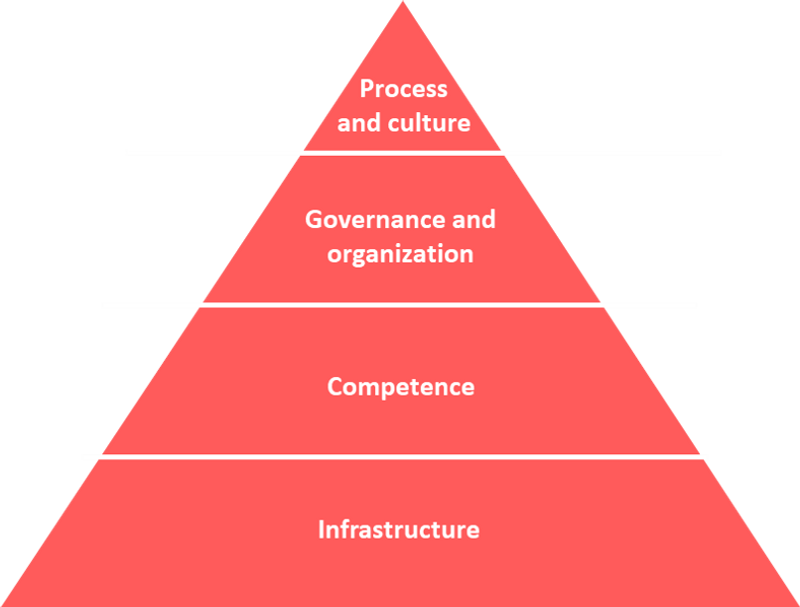Become a data-driven organization
Becoming “data-driven” has been a stated objective for many organizations over the past few years. However, according to Harvard Business review most companies are failing to achieve this.
2 min read
·
By Harald Kjølner, Ola Swensson
·
December 21, 2019

There are a variety of possible explanations for the failures to become a data-driven organization. A lack of available resources with the right skill set, an outdated data platform or lack of management buy-in, are some of the reasons we have witnessed.
We have also seen how organizations have tried different approaches to reaching their objectives. Some successful and others not. Spending three years on building a pre-defined data platform and hiring 50+ data scientists falls into the latter category.
What’s typical for those who succeed is that they work systematically along four dimensions. Typically, all organizations are placed on a scale from non-existing to mature within these four dimensions, which are described below.

###Infrastructure
The requirements for infrastructure have changed as a result of the need for increased volume, speed and data variation. Different organization’s maturity ranges from operational databases with ad hoc extraction of data, to gathering and consuming a variety of data sources in real-time.
###Competence
Converting data into actions requires the right analytics competence. At the lower end of the maturity scale, business developers only interpret reports created by a few employed BI analysts. At the other end you have analytical and self-propelled business developers, along with highly skilled data scientists who work exploratory.
###Governance and organization
Organizations who manage to take full advantage of available data are usually organized in product teams. Data scientists are then distributed across these teams, where they spend most of their time, while maintaining and updating their knowledge through a professional community.
###Process and culture
Less mature organizations mostly use data in static reporting and base many decisions on intuition and experience. Data-driven-organizations however, work hypothesis driven and dedicate time to exploratory work, and they will require data to support every leadership and board decision.
Becoming a data-driven organization requires work along all these dimensions, and there is not one single answer to what is the right approach for you. Analyse where you are, set tangible and realistic ambitions within the four different dimensions and start getting your hands dirty with a few business-relevant use-cases. Some initiatives will succeed, others not. Scale those that succeed, and suddenly you are data-driven before you even realise it.
Up next...
Loading…